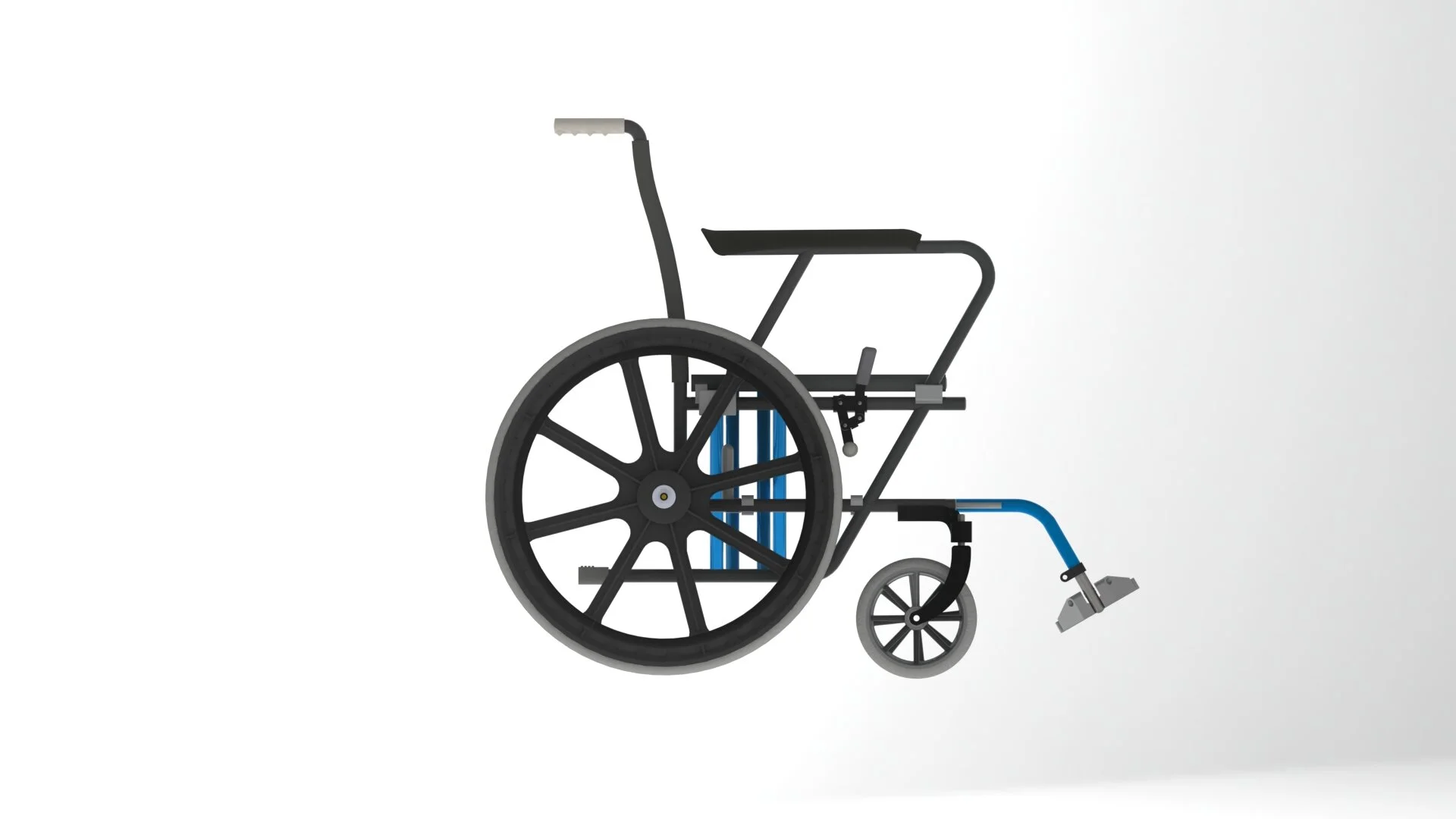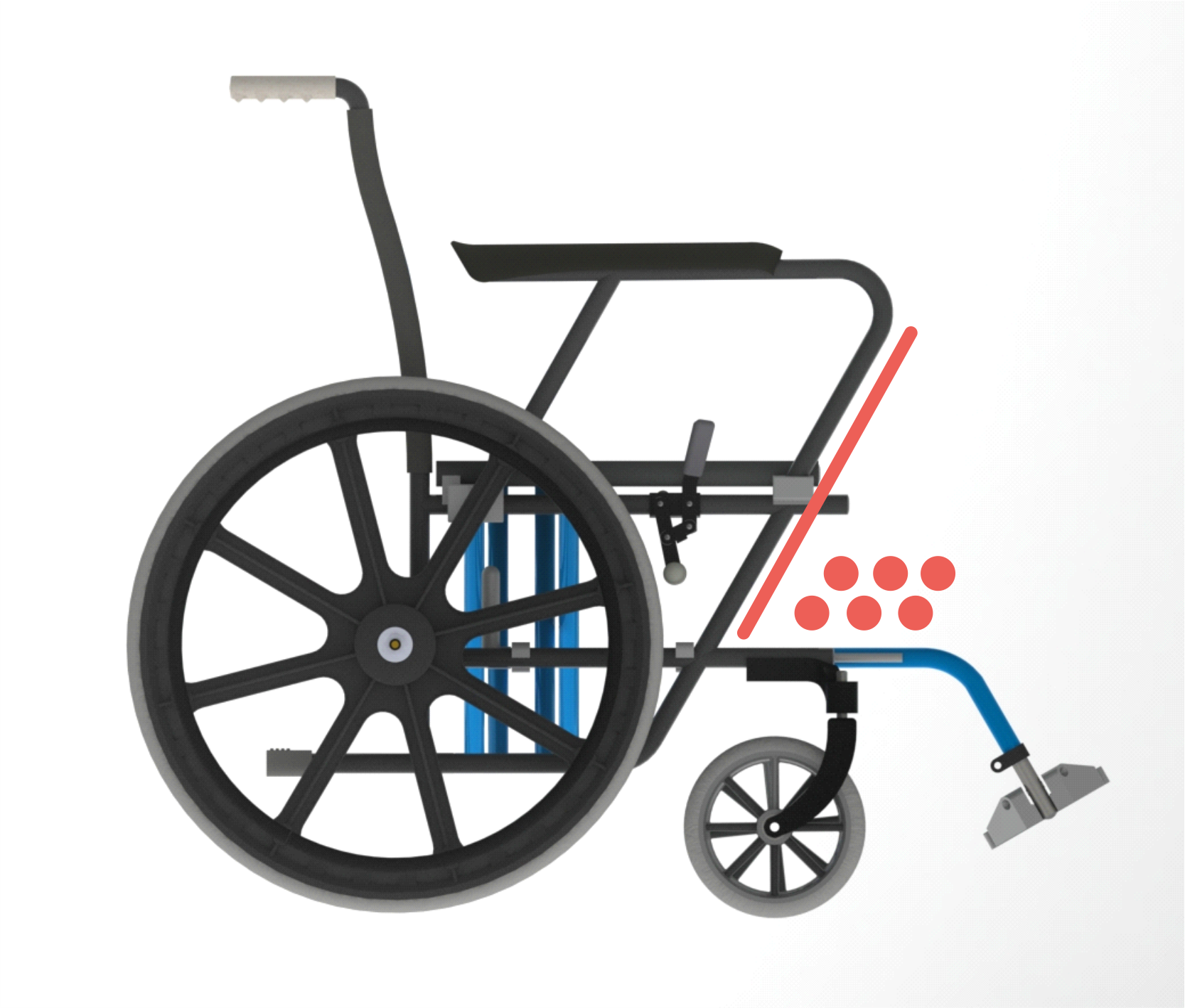On-Wheels
SOLUTION
A wheelchair need not look like a complicated contraption of colossal care. It is simply an extension of the patient & has two very simple functions (support & mobility). The form of the wheelchair should reflect this.
The 938N does away with the sharp edges and has a more fluid design to make it look less intimidating. This new wheelchair is lighter, has a lower manufacturing cost & a smaller storage footprint
CHALLENGE
Today, products focus on adding a long list of features (even if they are unnecessary) instead of focusing on what is important. We need to move away from the idea that more features makes a product better and focus on designing core functions.
The aim of this project was to redesign the existing Vissco wheelchair (938) as a user friendly product that is appealing & welcoming.
Client: Vissco Rehabilitation Aids Pvt. Ltd.
WHEELCHAIR USE
I further looked at usage patterns for wheelchairs across, age, sex & ailment. Most patients that bought new wheelchairs were hospitals & baby boomers.
Interviews
I conducted a total of 23 interviews with the 4 stake-holders to gain further insight into user needs
Insights
The clustering and re-clustering of data led to the formation of actionable insights that helped develop my design criteria
Design Criteria
MOODBOARD
The concept should have a fluid, soft and luxurious look that allows the piece to fit into any style or scenario.
Form and color should portray the functions (support & mobility) and use of the wheelchair.
As this was a redesign project, I also looked at the existing model to identify specific problems that users had faced
Form Ideation & Development
Keeping my design criteria in mind, I started developing initial ideas for form that looked less intimaditing.
Next I focused ideation to develop mechanisms that allowed for easy & comfertable interaction that empowered the user.
1:4 Scale Model
I built a scaled model of the final selected direction to communicate the concept in 3 dimensions to the end user and the manufacturing unit. This also helped fix any kinks in the feasibility of the model.
A CAD model was then developed for the manufacturing unit for production.
On-Wheels
The 938N does away with all sharp corners to give it a more fluid design that looks less intimidating and allows easier interaction.
This wheelchair moves away from the idea of added functions and instead focuses on core functionality without compromising on features by allowing the customer to customize parts that he needs
The V Frame has an angled shape that allows the front to be open without affecting the strength of the wheelchair. As a result, most pipes get hidden under the seat and away from the user’s eyes.
The weight distribution between the wheels is roughly 30% - 70%. Reduced weight on the front castors makes the wheelchair easier to maneuver.
The wheelchair is designed to allow easy interaction that empowers the user to be self sufficient instead of relying solely on the caregiver
The swivel footrests are replaced with a sliding footrest that slides under the wheelchair when not needed. along with making it easier for the user to get off, it also alows for complete control of position adjustment along the X-Y plane. Further, this mechanism reduces the overall footprint when stored.
The wheelchair uses color as visual cues to prompt action and function by subconsciously relating the presence of color to a function or mechanism that the user can interact with























